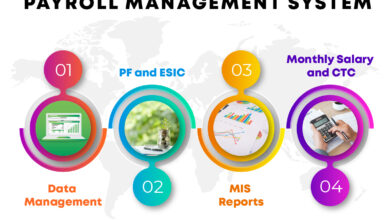Understanding the Differences: SFTP Vs. API Integration

SFTP and API offer valuable solutions for data integration, and the right one depends on your business needs and technical capabilities. SFTP is simple and secure for batch processing, while APIs provide more flexibility and real-time data exchange.
SFTP is excellent for transferring flat files to legacy ERPs, but it can introduce room for human error and does not function in real time. In contrast, APIs can automate the verification of incoming data and reduce the risk of errors.
SFTP offers a simple and secure solution for batch data transfer
SFTP offers a simple solution for companies that need to send large data files in batches or at set intervals. It provides more security than FTP since it’s encrypted and can comply with regulations like GDPR and HIPAA. For example, SFTP can transfer files containing sensitive information, such as bank account details or supplier sort codes, which are needed for payment processing and routing.
Unlike FTP, SFTP uses shell-based encryption, which makes it much more difficult for hackers to access data. It is essential for companies that need to comply with regulatory compliance and other data privacy requirements. Moreover, SFTP can verify hosts and users, which helps protect businesses from data breaches.
In addition to security, SFTP can improve productivity by providing fast and reliable data transfers. It is also firewall-friendly and supports username/password authentication, which is vital for many business environments. Furthermore, it can be configured as a centralized file server or an asynchronous communication method.
With the flexibility of SFTP, companies can offer employees the option of working remotely. It can help attract and retain talent, especially with Gen Z entering the workforce. In addition, flexible working can help businesses meet customer demands and increase revenue. As more workers seek flexible working options, the demand for secure file transfer solutions will increase.
It’s easy to implement
While SFTP is an excellent solution for large flat files, it can be inefficient for systems that require real-time data exchange. SFTP doesn’t provide a way to notify clients of real-time changes in file system data, which makes it hard to keep up with updates without wasting resources. It also doesn’t support data validation, which can cause errors that could be costly in the long run.
Another issue with SFTP is its inability to log security violations or authenticate users – basic capabilities for combating today’s cyber threats. An SFTP site with an underlying public critical infrastructure can help overcome this, but it requires significant hardware investments and additional security staff.
On the other hand, APIs offer a more flexible solution for integration between different software applications. They are easy to implement and require minimal development time. However, they can be expensive for companies that need to integrate with 3rd party apps that are complex or highly customized. Additionally, updating and refreshing data can be time-consuming because most APIs operate record-by-record. Real-time access to dynamic information might be annoying. Many insurance companies and benefits administration systems work together to offer entirely digital group applications and quick insurance verification during open enrollment. The companies can decide whether to employ SFTP vs API integration for their system.
It’s more efficient for large-volume uploads
The SFTP protocol is easy to implement and offers a reliable solution for bulk data transfers. However, it could be better for real-time transactions because it needs a built-in way to notify clients of changes to the file system in real-time. Instead, you must poll the server regularly and compare files to see if they are updated. It can be cumbersome and costly if you have to do this often.
Flat-file integration methods such as SFTP require employees to manually download, update, and re-upload the data to ensure accuracy. It introduces the risk of human error that can wreak havoc on business operations and create compliance issues.
Fortunately, managed file transfer (MFT) software offers a more robust solution to SFTP for high-volume uploads. This technology streamlines the process by automating large-volume uploads and reducing processing costs. It also provides an encrypted connection that can be monitored to meet compliance requirements and governance policies. Moreover, it can help you monitor and audit your file transfers to improve visibility. In addition, it can provide centralized control to simplify configuration and increase performance. It can make it easier to manage large-volume file transfers, improve the speed of data exchange, and enhance security for critical business transactions. In addition, it can reduce the overall cost of operation by minimizing bandwidth consumption.
It’s more flexible for real-time data exchange
SFTP uses machine-readable directories and encrypted communication to prevent unauthorized third parties from viewing flat files, an excellent feature for businesses that must adhere to strict privacy and compliance regulations. Additionally, it offers a layer of data validation that allows the server to verify the integrity and accuracy of incoming data. It is a critical function that APIs don’t inherently provide and can help protect your system against critical errors.
The main drawback to SFTP is that it only transfers data in batches or at scheduled intervals, making it unsuitable for applications that require real-time information exchange or updates. This method also requires employees to manually download, update, and re-upload large files continuously, which can be challenging to manage. It can lead to inefficiencies and create room for human error, impacting critical systems.
APIs offer a more flexible approach to data transfer, allowing multiple software applications to interact with one another and enabling dynamic information exchange. However, APIs can be more complex to set up and maintain and require more resources than SFTP. In addition, they can require a significant amount of bandwidth and computational resources to operate, making them more susceptible to network interruptions. Ultimately, the best solution for your business depends on your specific needs and technical capabilities.



